30 Things I Learned at European Cooking School That Changed the Way I Cook Forever
Small shifts that made my cooking (and honestly my whole life & energy at home) feel simpler, cooler, more beautiful and way more delicious
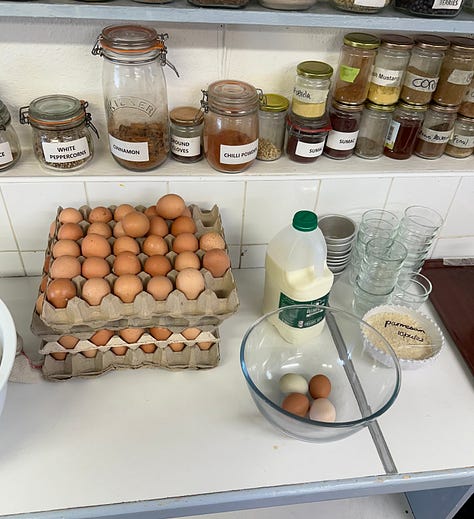

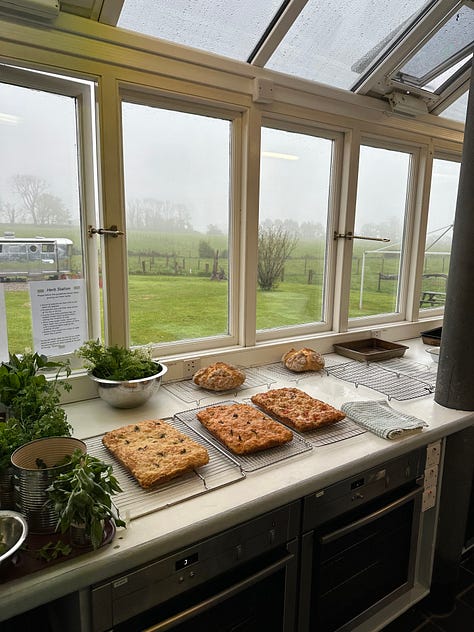


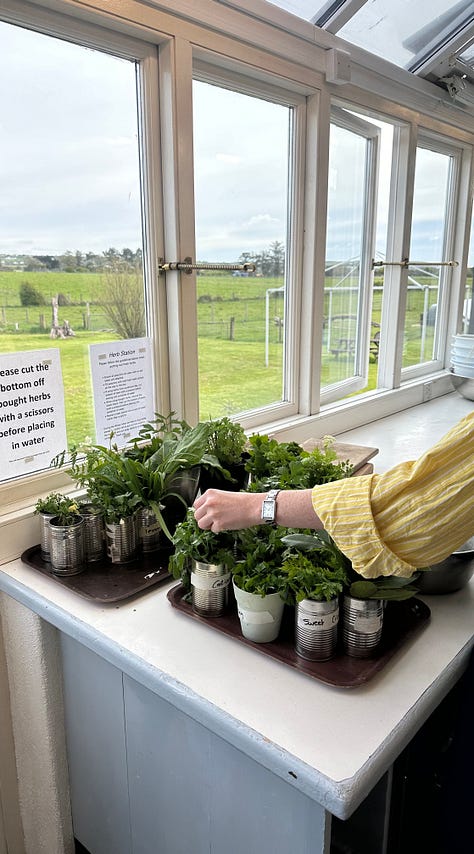
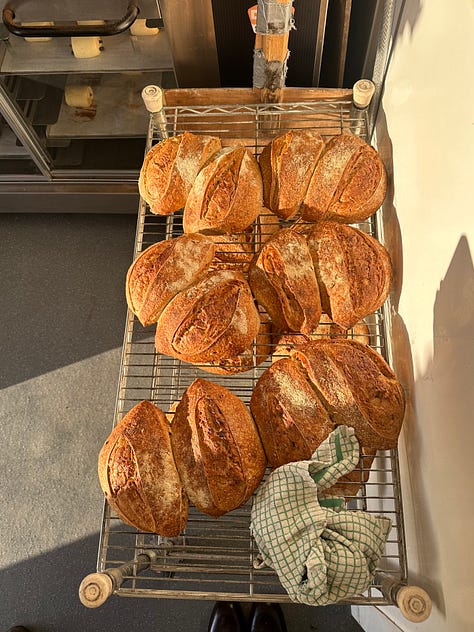
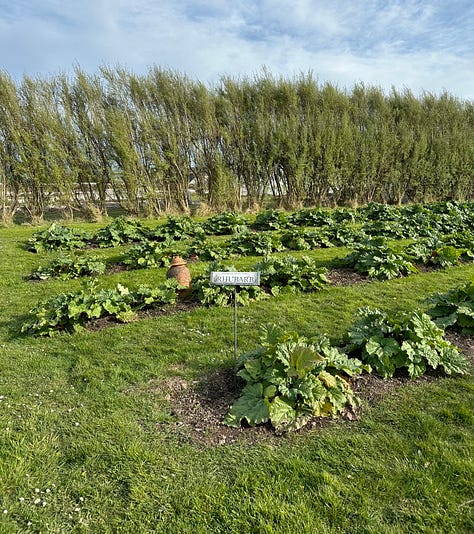
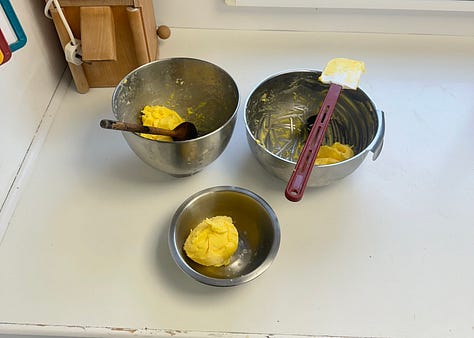
Hi guys,
One week of cooking school in Ireland is officially done, and naturally... I've been taking notes. Honestly, even after just a few days, my whole perspective on food, flavour, and cooking shifted in the best way. It's not about being complicated or fancy — it's about paying attention to the little things that actually make a huge difference.
I thought it would be fun (and helpful) to share some of my favourite tips, tricks, and methods I’ve picked up so far — the tiny habits that make your food taste better, your cooking feel easier, and the whole process way more enjoyable.
Here are 30 things I’ve learned that I know will make you feel so much more confident in the kitchen that I will be taking with me!
Cooking Proteins
1. Always Sharpen Your Knives Before Cooking
A sharp knife makes cooking faster, safer, and more efficient. Sharpen your knives regularly or at least once a week to maintain their effectiveness. Dull knives can cause accidents and make cutting more difficult, which is why proper maintenance is key.
2. Let Proteins Rest Before Cooking
For the best texture and flavor, let meats, poultry, eggs, and cheese come to room temperature by resting them on the counter for 30 minutes before cooking. This allows the proteins to cook more evenly and reduces the chance of them becoming tough or dry.
3. Use a Meat Thermometer for Precision
To ensure your proteins are cooked perfectly, use a thermometer instead of relying on timers. Every oven and stovetop cooks differently, so this method guarantees the right temperature and helps avoid undercooking or overcooking. For example, for poultry, aim for 165°F (74°C), and for beef steaks, 130°F (54°C) for medium-rare.
4. Finger Touch Method for Checking Doneness
A simple way to check how cooked your meat is:
- Thumb to pinky = well done
- Thumb to ring finger = medium well
- Thumb to middle finger = medium rare
- Thumb to pointer finger = rare
Touch the part below your thumb on the fatty/muscly part of the palm of your hand (your abductor pollicis brevis). This method helps you quickly gauge doneness without cutting into the meat, which can cause juices to escape.
5. Sear Your Meat for the Best Flavour
To achieve a crispy, flavorful exterior on meats, always start by searing them in a hot pan. The Maillard reaction creates deep, caramelized flavors that enhance the taste. Make sure your pan is preheated and use a little oil to prevent sticking.
Cooking Vegetables
6. Don’t Overcook Your Vegetables
For the best texture, vegetables should be tender but not mushy. Avoid overcooking, and consider enhancing with spices, herbs, or citrus for extra flavor. Overcooked vegetables lose nutrients and become less appealing, so aim to keep them crisp-tender.
7. Add Salt After Cooking Vegetables
Adding salt too early to vegetables can draw out moisture, leading to soggy dishes. Wait until the vegetables are nearly cooked before salting to preserve their texture. Also, seasoning vegetables in stages as they cook enhances their natural flavors.
8. Enhance Flavors with Acidity
Incorporating acidity from ingredients like lemon juice, vinegar, or even wine can elevate the flavors of fatty or rich dishes. A squeeze of lemon can brighten up a heavy sauce or stew. Vinegar works well to balance out rich meats, and balsamic vinegar can add complexity to roasted vegetables.
Baking Tips
9. Use Cold Butter for Baking
When a recipe calls for cold butter, instead of cubing it, grate the butter using a cheese grater. This helps the butter incorporate faster and more evenly into the dough, making it easier to work with. Cold butter creates flakier pastries, as it helps form pockets of steam when baked.
10. Boil Potatoes Before Roasting for Crispy Results
For perfectly crispy roasted potatoes, boil them first until just tender. Then, roast them at a high temperature (around 425°F/220°C) to get that golden, crispy exterior. Don’t forget to toss them in oil and seasoning before roasting.
11. Tear, Don’t Chop Fresh Herbs
Chopping herbs with a knife can bruise them, which can cause them to lose their essential oils and flavour. Tear or cut herbs by hand to preserve their aromatic qualities. This ensures that the herbs maintain their vibrant taste.
Enhancing Dishes in a Healthy Way
12. Season Early and Taste as You Go
Start seasoning your dishes early, especially vegetables. Taste throughout the cooking process to ensure the seasoning is just right. Seasoning in stages allows you to develop a more balanced flavor profile.
13. The Power of Fresh Herbs, Garlic, Lemon, and Onion
Always keep fresh herbs, garlic, lemon, and onion on hand. These ingredients are incredibly versatile and can elevate almost any dish without added calories or sugar. Fresh herbs can be used to garnish dishes or incorporated into cooking for added depth of flavor.
14. Use the Right Oil for the Right Cooking Method
Different oils have different smoking points and should be used accordingly:
- Extra Virgin Olive Oil: Best for low to medium heat or for finishing dishes. It has a smoke point of around 375°F (190°C), making it great for sautéing and drizzling over salads.
- Avocado Oil: Great for higher heat cooking like frying and searing, with a high smoke point of around 520°F (271°C).
- Sesame Oil: Ideal for drizzling over dishes as a finishing oil or used in stir-fries, but not for high-heat cooking, with a smoke point of about 350°F (177°C).
- Coconut Oil: Good for medium heat cooking, with a smoke point of around 350°F (177°C). It adds a subtle tropical flavor to dishes.
- Butter: Use butter for low to medium heat cooking or for finishing dishes, but be cautious as it burns easily. The smoke point is around 350°F (177°C).
- Ghee: Ghee, or clarified butter, has a higher smoke point of around 450°F (232°C) and is great for sautéing and high-heat cooking. It also has a rich, nutty flavor.
15. Make Your Own Sauces and Dressings
Batch-make your own dressings and sauces rather than buying store-bought versions. This is a healthier option and allows you to use whole ingredients. A simple vinaigrette can be made with 1/3 acid and 2/3 oil, then customize with herbs or mustard for added flavor. Homemade dressings are fresher and can be made in under 5 minutes.
16. Add Vinegar to Enhance Dishes
Adding a splash of vinegar, especially when paired with a fat (like olive oil or butter), can brighten and elevate the flavors of your dish. Vinegar is particularly good in rich or fatty dishes to balance out the heaviness. It’s also useful in marinades and dressings to add sharpness and complexity.
Food Storing
17. Keep Salad Leaves Fresh and Crunchy
When you get home from the market, put your salad leaves in an ice bath to refresh them. Spin them dry and wrap them in a paper towel, not plastic, to keep them crispy longer. Paper towels absorb moisture, helping your greens last longer in the fridge.
18. Freeze Fresh Herbs and Vegetables
Don’t toss out your fresh herbs or vegetables if you can’t use them immediately. Freeze them at their freshest point. For example, freeze herbs in olive oil or vegetables like tomatoes by blanching them and storing them for later use. Freezing herbs helps preserve their flavor, and you can use them directly from the freezer in soups, sauces, and stews.
Kitchen Essentials and Tools
19. Use a Cast Iron Skillet
A cast iron skillet is an essential tool in any kitchen. It provides even heat distribution and creates a beautiful crispy finish on meats and vegetables. Remember to season your skillet regularly to maintain its non-stick properties. Cast iron also holds heat well, making it perfect for searing meat or baking cornbread.
20. Invest in Quality Knives
A sharp knife is essential for efficient, safe cooking. Regularly sharpen your knives to ensure they perform at their best. A dull knife can be dangerous and will make cooking more difficult. Invest in a quality set of knives, including a chef's knife, paring knife, and serrated knife, to handle various kitchen tasks with ease.
Cooking Techniques
21. Don’t Rinse Your Protein Before Cooking
It’s a myth that rinsing protein like chicken helps remove bacteria. Don’t rinse your proteins before cooking them, as it can spread bacteria and make the kitchen messier. Instead, pat them dry with paper towels to help the skin crisp up when cooking.
22. Poaching Proteins for Tenderness
Poaching is a gentle method for cooking delicate proteins like chicken breasts, fish, or eggs. Submerge them in barely simmering water or broth for a moist, tender result. Poaching helps preserve moisture and keeps the proteins from becoming dry.
23. Browning Meat for Depth of Flavor
Before adding meat to a stew or sauce, brown it first. This creates a rich, deep flavor due to the Maillard reaction, which caramelizes the proteins and sugars in the meat. The resulting browned bits at the bottom of the pan, known as fond, are packed with flavor and can be deglazed to make a delicious sauce.
Storage and Batch Cooking
24. Keep Leftover Stock for Future Dishes
Instead of discarding leftover vegetable or meat scraps, make your own stock. It’s a great way to use up what might otherwise go to waste, and it can serve as a base for soups, sauces, and risottos. Store the stock in airtight containers or freeze it in ice cube trays for easy portioning.
25. Store Fresh Tomatoes at Room Temperature
Tomatoes lose flavor and become mealy if stored in the fridge. Keep them at room temperature to preserve their full flavor and texture. If they are too ripe to use immediately, consider making a quick tomato sauce or freezing them for later use.
General Cooking Mindset
26. Cook with Patience and Love
Great cooking takes time. Don’t rush through the process or take shortcuts. Stay calm, be patient, and focus on the details. The care you put into cooking will always translate into better dishes. Enjoy the process rather than focusing solely on the end result.
27. Don’t Overcrowd the Pan
When cooking proteins or vegetables, give them space in the pan or on a sheet tray. Overcrowding traps steam, leading to uneven cooking. Your food will cook more evenly and develop a beautiful caramelized texture when there’s room to breathe. If needed, cook in batches.
Advanced Tips
28. Toast Nuts and Seeds for Extra Flavor
To enhance the flavor of nuts and seeds, always toast them lightly in a dry pan before adding them to dishes like salads or granola. Toasting caramelizes the natural oils, intensifying their taste and adding a pleasant crunch to your dishes.
29. Rest Meat Before Cutting
Once your meat has finished cooking, let it rest for at least 8 minutes. This allows the juices to redistribute, ensuring that the meat stays moist and flavorful when you cut into it. Cutting into meat immediately can cause it to lose its juices, making it dry.
Final Thoughts
30. Quality Ingredients Speak for Themselves
You don’t need fancy sauces or extensive garnishes to make a dish amazing. Fresh, high-quality ingredients, prepared and cooked with care, are the key to creating delicious meals. Prioritize seasonal and local ingredients when possible for the freshest, most flavorful dishes.





Great tips, thanks so much for sharing! Numbers 7 & 12 seem to be at odds with each other: don’t season your vegetables early or they’ll get mushy, but - season early, especially vegetables?
Can you explain number four a little more? I’m having trouble visualizing.